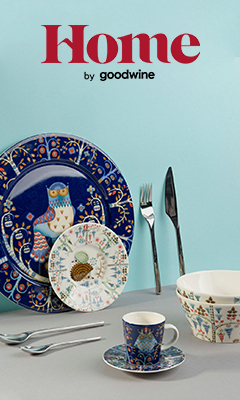What is the closest DNA to humans?

What is the closest match to human DNA
Chimpanzee: 96 percent identical
By studying the genomes of chimps (which after bonobos are our closest living ancestors), researchers are hoping to understand what makes us uniquely human.
How much DNA do humans share with cats
90%
Cats and humans share 90% of their DNA
Do you know how genetically close your feline is it to you You may have thought that dogs would be a little closer to humans on the evolutionary scale, but it turns out that cats actually have 90.2% of the DNA in common with us! You read that right!
How much DNA do we share with dogs
Humans and dogs share 84 percent of their DNA, which again, makes them useful animals to study human disease processes.
Do humans share DNA with trees
We also share a shocking amount of DNA with plants and insects. Plants and Insects We share around 60% of our DNA with bananas, 50% of our DNA with trees, 70% of with slugs (gross), 44% with honey bees, and even 25% with daffodils.
Can you get a 100% DNA match
Comparing the DNA sequence of a child to a parent can identify if one of them was derived from the other. This does not mean that we can achieve a probability of 100%.
Can there be a 100% DNA match
A 100% DNA match on Ancestry means that your relationship to your relative is almost certainly one of the relationships listed in the relationship column. We will typically only have 100% probability DNA matches for relatives who are either descended from us, or very closely related.
What animal do humans share 70% of their DNA with
slugs
It's probably not that surprising to learn that humans share 98% of our DNA with chimpanzees–but incredibly, we also share 70% with slugs and 50% with bananas.
Do all humans share 99.9 of the same DNA
All human beings are 99.9 percent identical in their genetic makeup. Differences in the remaining 0.1 percent hold important clues about the causes of diseases.
Can you share 100% DNA
Identical twins are the only siblings that share 100% of their DNA. Non-identical brothers and sisters share about 50% of inherited gene variants, which is why siblings and fraternal twins can be so different.
How much DNA do we share with a strawberry
You may be surprised to learn that 60 percent of the DNA present in strawberries is also present in humans.
How much DNA do we share with apples
about 40%
As a result humans share about 40% of our DNA with apples. As a side note the DNA of all humans is about 98.5% identical with that 1.5% difference making up all the different variations we see in people.
How much is 1% of your DNA
around seven generations
With each generation, your DNA divides. So, for a 1% DNA result, you would be looking at around seven generations. This would go back to your x5 great grandparent.
Is 25% of DNA alot
You share around 50% of your DNA with your parents and children, 25% with your grandparents and grandchildren, and 12.5% with your cousins, uncles, aunts, nephews, and nieces. A match of 3% or more can be helpful for your genealogical research — but sometimes even less.
Is 1% of DNA alot
Well, a 1% match indicates that 100% ancestry was likely 6 – 8 generations back. This means they could be as close as your great-great-great-great grandparent. What is this If the connection were as close as this some people may already know or suspect that they had Native ancestors.
Can you share 75% DNA with someone
One of the most interesting aspects of the data above is that a person will share 75% X-DNA, on average, with their maternal aunt. This might seem too high, since many close relatives only share 50%, on average. But the 75% value is correct.
Do humans share 99 DNA with lettuce
We know the genetic difference between sexes is around one in 20,000. We know chimps and bonobos share 99% of our genes. More startling is an even newer discovery: we share 99% of our DNA with lettuce.
What animals share 99% DNA with humans
Ever since researchers sequenced the chimp genome in 2005, they have known that humans share about 99% of our DNA with chimpanzees, making them our closest living relatives.
Can two people have 100% same DNA
Identical (i.e., monozygotic, or MZ) twins share 100 percent of their genes, whereas fraternal (i.e., dizygotic, or DZ) twins generally share only 50 percent of their genes.
Who do we share 98% of our DNA with
chimps
Humans and chimps share a surprising 98.8 percent of their DNA. How can we be so similar–and yet so different
Who would I share 12% DNA with
Average Percent DNA Shared Between Relatives
| Relationship | Average % DNA Shared | Range |
|---|---|---|
| 1st Cousin Great-grandparent Great-grandchild Great-Uncle / Aunt Great Nephew / Niece | 12.5% | 4% – 23% |
| 1st Cousin once removed Half first cousin | 6.25% | 2% – 11.5% |
| 2nd Cousin | 3.13% | 2% – 6% |
| 2nd Cousin once removed Half second cousin | 1.5% | 0.6% – 2.5% |
Which has more DNA a kiwi or a strawberry
Strawberries have large genomes; they are octoploid, which means they have eight of each type of chromosome in each cell. Thus, strawberries are an exceptional fruit to use in DNA extraction labs and strawberries yield more DNA than any other fruit (i.e. banana, kiwi, etc.).
How long ago is 1% DNA
At seven generations back, less than 1% of your DNA is likely to have come from any given ancestor.
Is 0.5% DNA a lot
Once we are dealing with 0.5% of something, we are really talking about one or maybe two tiny bits of DNA. In fact, it is so small each child might have just a 50% chance of inheriting any of it from their parent(s).
Does 2% DNA mean anything
As you can see, if we inherit 2% of our DNA from a particular region, we should be looking at least as far back as a great-great-great-great grandparent in order to identify the source of our DNA from that region. It's entirely possibly to inherit DNA in even, 50% increments each generation.
What is 1% of our DNA
Only about 1 percent of DNA is made up of protein-coding genes; the other 99 percent is noncoding. Noncoding DNA does not provide instructions for making proteins. Scientists once thought noncoding DNA was “junk,” with no known purpose.



0 Comments